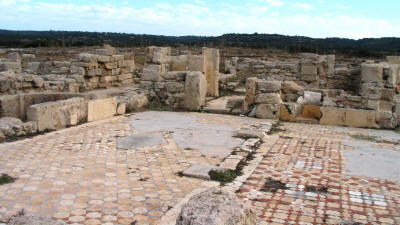Ayios Philon
Dipkarpaz, North Cyprus
 |
| Ayios Philon Church |
In the centre of Dipkarpaz, if you leave the road that takes you to along the southern coast of the Karpaz to Apostolos Andreas Monastery, and take the northern coast road instead, you will end up at Ayios Philon.
The church here, was built in the 10th Century, on top of a much earlier, possibly 5th Century, basilica, and is virtually all that remains of the ancient Phoenician port of Karpasia. Founded by King Pygmalion of Cyprus, it was a flourishing trading port, half way between Salamis and Anatolia. It was, however, abandoned in 802, after Arab raiders burnt and sacked it and its inhabitants moved inland, founding Dipkarpaz. (This is a fate seen time and time again when we look at the coastal villages of the time.)
 |
| The 5th Century Basilica |
Traces of the old harbour wall can still be seen off shore, but the majority of the village is now under sand dunes to the west of the church.
The church is named after St Philo, who converted the people of the area to Christianity, and had been ordained by St Epiphanios in the 4th Century. (St Epiphanios' Basilica is to be seen at Salamis) It is a typically domed Byzantine church, with a three-part apse and a courtyard surrounded by columns. There is a cistern and baptising room, as well as numerous mosaics all around from the earlier structure.
Ayios Philon is a pleasant place to pause your exploration of the Karpaz. From here you can continue to the Aphendrika, or turn back to Dipkarpaz to continue to Apostolos Andreas Monastery. Or have a snack overlooking the old harbour while you think about it.
See the location on Google maps.
Return to Dipkarpaz index.